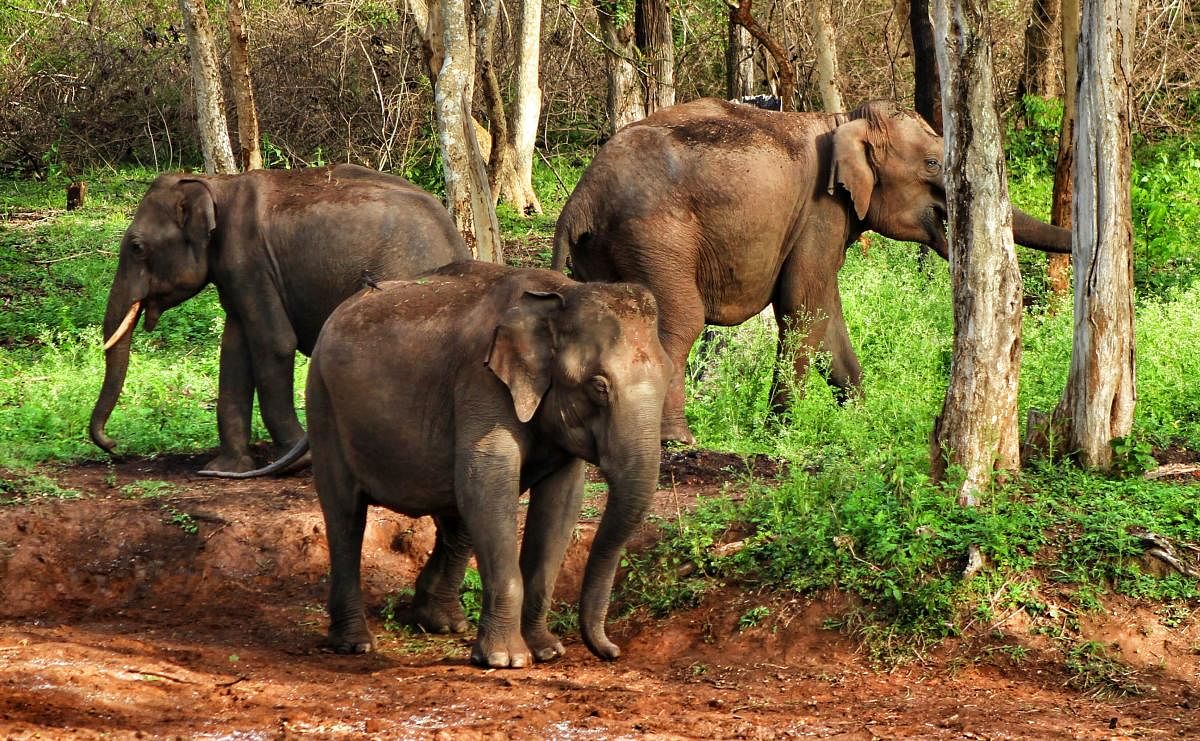
Movement is critical to an animal’s survival, and the connectivity of landscapes enables this persistence. However, sometimes, movement inevitably puts them in contact with humans, even leading to death. A day doesn’t go by without at least one incident of elephant-human interactions headlining in India. The situation warrants urgent attention.
However, can conservation solutions isolate the need for connectivity while addressing conflict? A new study addresses this paradox and contends that conflict and connectivity should be viewed together to minimise interactions and support wildlife populations.
Authors Divya Vasudev, Rob J Fletcher, Nishanth Srinivas, Andrew J Marx and Varun R Goswami developed a framework by mapping the connectivity-conflict interface that predicts conflict hotspots, impacts on connectivity, and recommends conservation interventions. In the paper published in the Proceedings of the National Academy of Sciences (PNAS), the authors illustrate the framework with elephants in the Mysore Elephant Reserve areas.
The method
The framework derived from random-walk theory “is a way of modelling animal movement step-wise, wherein you model the next step of the animal based on its previous location. The Spatial Absorbing Markov Chains (SAMC) framework model takes these models and incorporates mortality, including natural or non-natural (conflict-induced mortality) causes. It turns out that even just incorporating natural mortality, for a long-lived species like the Asian elephant, substantially impacts the way we see connectivity,” explains lead author and senior scientist Divya Vasudev.
The framework applied to the Mysore Elephant Reserve, a critical conservation landscape with multiple protected areas and a history of human-elephant interactions, provides details of key connectivity and elephant dispersal areas. Inputs from interviews with locals further substantiated elephant use of the matrix provided by the framework and confirmed conflict zones.
The SAMC combines the expectations from these maps and provides an integrated perspective on movement and conflict prediction across landscapes. It offers short-term and long-term predictions. “For example, what happens if we lose a forest? The framework can predict both immediate and longer-term consequences,” adds Divya.
Interactions in the study area persist for various reasons. When people visit forests to extract produce, or when elephants move through connected forests crossing agroforests, plantations, crop fields etc. Currently, several mitigation measures are being implemented, including fencing and the capture of elephants, with the latter offering little consideration for connectivity. The study highlights how this impacts conservation success.
The current practices
In 2018, the image of a dead elephant hanging on a railway fence in the Nagarahole Tiger Reserve created an uproar. But this was not an isolated incident. Over the years, several mitigation measures have been adopted to address the human-elephant interactions in the area, including railway fencing. In 2015, Rs 212 crore was sanctioned for a 33-km-long rail fence along the Nagarahole forest boundary, with plans for hundreds of kilometres of fencing still due. However, human-elephant interactions over the years in the area have not reduced, nor have elephants trying to cross the fence.
Varun Goswami, a senior scientist and director of Conservation Initiatives, suggests that fences need to be part of a larger, landscape-scale solution designed based on both the ecological needs of elephants and their interactions with people.
“Fences can be sustainable if they are not impeding vital elephant movement. They should be designed to ‘fence elephants out’ of human spaces rather than ‘fencing them in(to)’ forests. Maintaining landscape connectivity through such strategies can reduce human–elephant interactions that can lead to conflict," he says.
The Hassan case
According to the Karnataka forest department data, human-elephant interactions have led to the death of 72 people in 21 years and reports of 37,891 crop loss cases since 2007 in Hassan district. “Our findings show that the area falls under moderate to high visitation rates by elephants. The landscape dominated by stretches of human use (in this case, agroforests of coffee) presents a scenario where people and elephants interact fairly frequently,” affirms Goswami.
There have been records of human-elephant interactions in Hassan dating back to the 1950s. How often do these interactions lead to negative impacts on elephants and people? “For people, crop loss due to elephants is the most dominant cost. We found that areas with coconut and areca nut plantations witnessed considerably higher costs of conflict than locations with agroforests such as coffee,” says Goswami.
However, one of the go-to solutions adopted in the area has been the removal of elephants, with the government pushing to make it an “elephant-free zone”. Between 2013 and 2014, 22 wild elephants were captured and in December 2022, the forest department announced plans to relocate 65 more wild elephants. The study identifies Alur-Sakleshpur as a high elephant movement area. It argues against the current practice of capturing elephants, validating cases of the homecoming of translocated elephants and colonisation by other elephant populations.
“In June 2022, I witnessed the capture of a tuskless bull relocated from Sakleshpur to Nagarahole. The elephant returned to the same taluk in exactly a month. Several incidents of conflict were reported on routes the elephant took to return to its home range. The relocation of elephants is unlikely to be a permanent solution,” attests Abhilash Pavuluri, who spent over six months in the field with the nonprofit Nature Conservation Foundation’s human-elephant interactions team in Hassan.
People’s negative responses to elephants don’t just depend on losses to life or crops but also on how their concerns are being addressed and overall attitudes towards elephants and conservation. The authors insist that honest and compassionate engagement with stakeholders facing losses is critical. "This needs to be combined with context-specific long-term strategies to allow movement while minimising conflict. Habitat consolidation and pausing further loss and fragmentation of habitat has to be a key strategy for conflict mitigation,” they add.